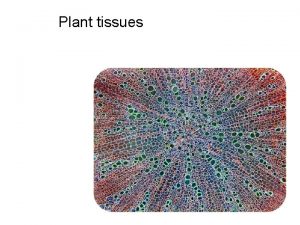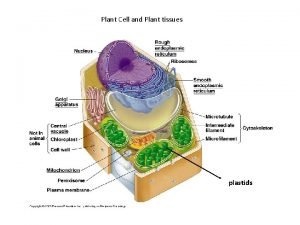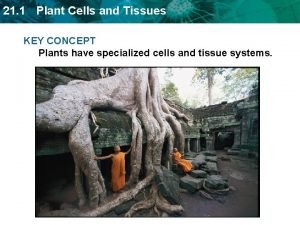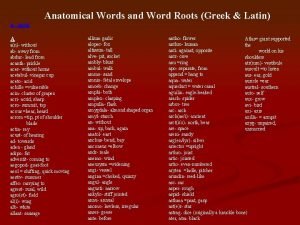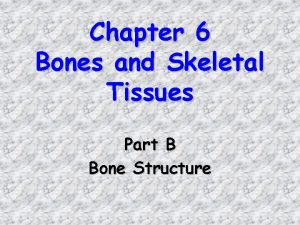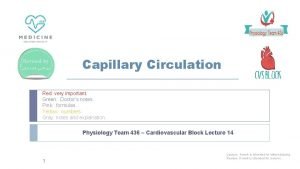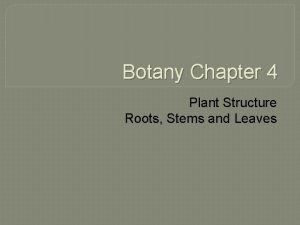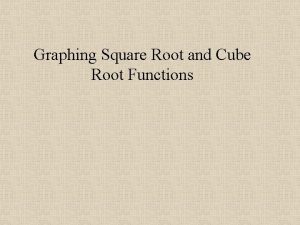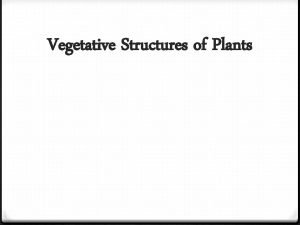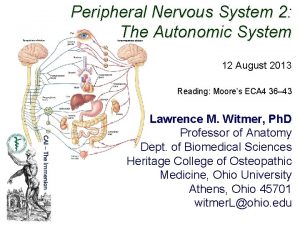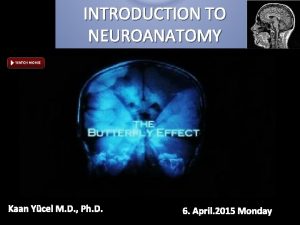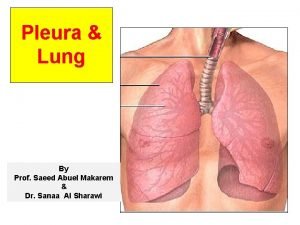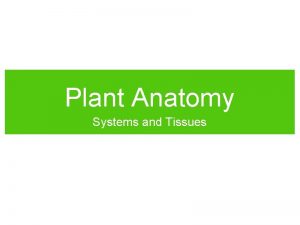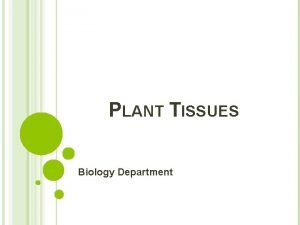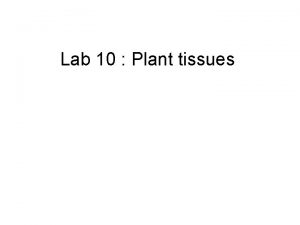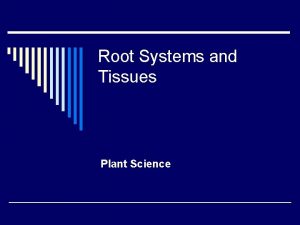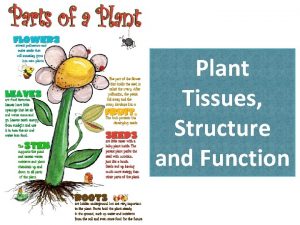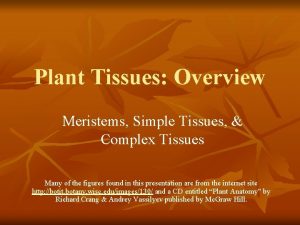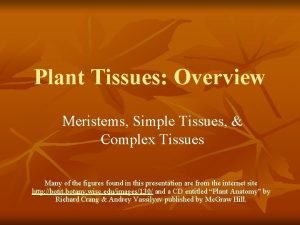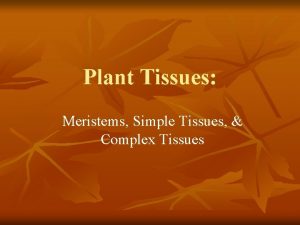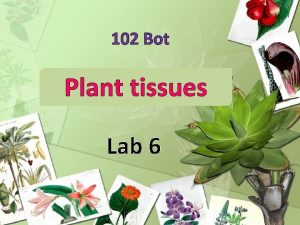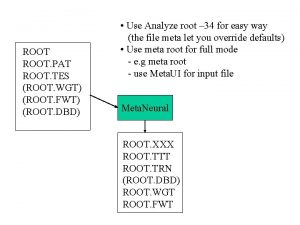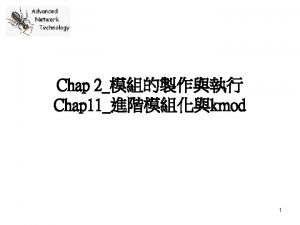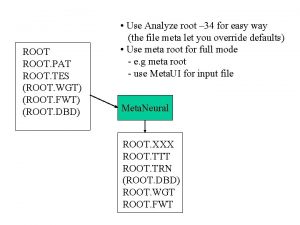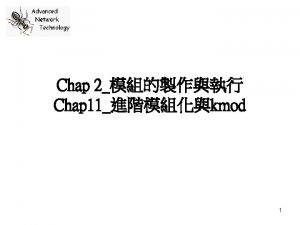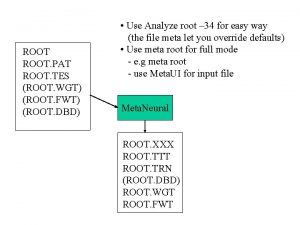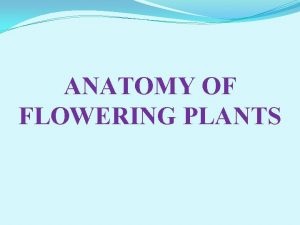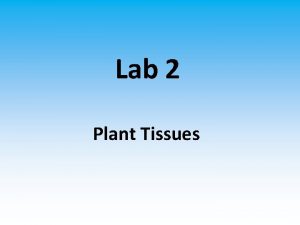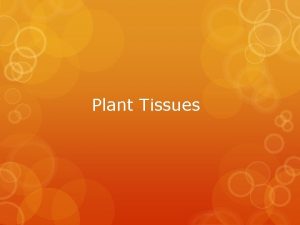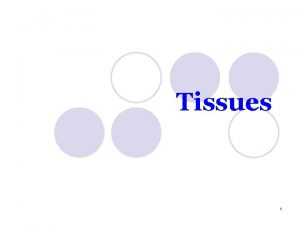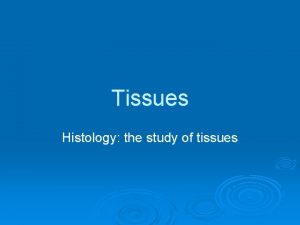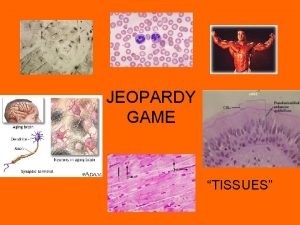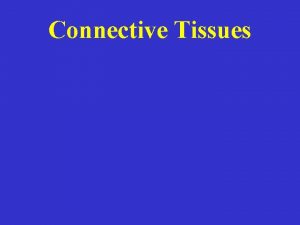Plant Anatomy Systems and Tissues Plant Structure Root

























- Slides: 25

Plant Anatomy Systems and Tissues

Plant Structure Root and shoot systems are made up of basic plant organs: roots, leaves, stems, flowers.

Root system • What are the major functions of roots?

Shoot system functions • What are some of the major functions performed by the shoot system?

Structure is used in classification • Two main categories of flowering plants: monocots and dicots • The two groups are distinguished on the basis of flower parts, leaf veins, and other structural features.

Flowers Monocots: flower parts in 3’s Dicots: flower parts in 4’s, 5’s, 6’s

Leaves Monocots: parallel veins in leaves Dicots: network of veins in the leaves

Roots Monocots: fibrous root system with no main tap root. Dicots: Main tap root, with smaller side roots branching off.

Seeds Monocots: single cotyledon; endosperm and cotyledon are separate Dicots: two cotyledons; endosperm is contained in the cotyledon.

This flower is probably a: 1. Monocot 2. Dicot

This flower is probably a: 1. Monocot 2. Dicot

This flower is probably a: 1. Monocot 2. Dicot

W O R K • If you’re asked to distinguish between monocots and dicots, which plant parts would make this task easiest? T O G E T H E R

Plant Tissues • Dermal tissue • Ground tissue • Vascular tissue

Copy this table: Primary tissue type Dermal Sub-types Epidermis Periderm Parenchyma Ground Collenchyma Sclerenchyma Xylem Vascular Phloem Structure Functions

Dermal tissue: Epidermis • How is an epidermis of a plant similar to your epidermis? • What does the epidermis do? • What features do you see in these cells?

Dermal tissue: Periderm • How is the periderm like the layer of dead skin cells on human skin? • What does the periderm do? • What features do you see in these cells?

Ground tissue: Parenchyma • What can you see in these parenchyma cells? • What are some functions of parenchyma cells?

Ground Tissue: Collenchyma • How might support cells be different from other plant cells? • Plants don’t have a skeletal system as humans do. What holds a plant up? • What features do you see in these cells?

Ground tissue: Sclerenchyma • How are these thick -walled cells different from collenchyma cells? • What features do you see in these cells? • Sclerenchyma cells are dead at maturity. Why might that be?

Vascular tissue: Xylem • Xylem tissue moves water. What features would the cells need to carry out this function? • What features do you see in these cells?

Vascular tissue: Phloem • Phloem tissue moves sap, which is sugar dissolved in water. What features would the cells need to carry out this function? • What features do you see in these cells?

Wood contains cells that are dead at maturity. They must be: 1. 2. 3. 4. Phloem Xylem Parenchyma Collenchyma

Potatoes are tubers (modified stems) that store starch. Most of a potato’s tissue must be: 1. 2. 3. 4. Sclerenchyma Collenchyma Parenchyma Vascular tissue

W O R K • Linen thread for weaving fabric is spun from bast fibers that come from the stem of the flax plant. Bast fibers are long, tough, and strong. Which plant tissue type are they most likely made up of? T O G E T H E R
 Body tissues chapter 3 cells and tissues
Body tissues chapter 3 cells and tissues 4 primary tissue types
4 primary tissue types Body tissues chapter 3 cells and tissues
Body tissues chapter 3 cells and tissues Stained cheek cell
Stained cheek cell Cells form tissues. tissues form __________.
Cells form tissues. tissues form __________. Supportive connective tissue
Supportive connective tissue Meristematic tissue flow chart
Meristematic tissue flow chart 3 tissues of a plant
3 tissues of a plant 3 tissues of a plant
3 tissues of a plant Plastid
Plastid Plant tissues
Plant tissues Where are loins on a human
Where are loins on a human Root word deci
Root word deci Chapter 6 bones and skeletal tissues
Chapter 6 bones and skeletal tissues Chapter 3 cells and tissues
Chapter 3 cells and tissues Chapter 3 cells and tissues figure 3-7
Chapter 3 cells and tissues figure 3-7 Chapter 3 cells and tissues figure 3-1
Chapter 3 cells and tissues figure 3-1 Where are capillary beds located
Where are capillary beds located Flexed fetal position
Flexed fetal position Tap root and fibrous root
Tap root and fibrous root Graphing square root and cube root functions
Graphing square root and cube root functions Primary root and secondary root
Primary root and secondary root Sympathetic and parasympathetic nervous system difference
Sympathetic and parasympathetic nervous system difference Bme580
Bme580 Root of lung anatomy
Root of lung anatomy Bronchial segments
Bronchial segments






